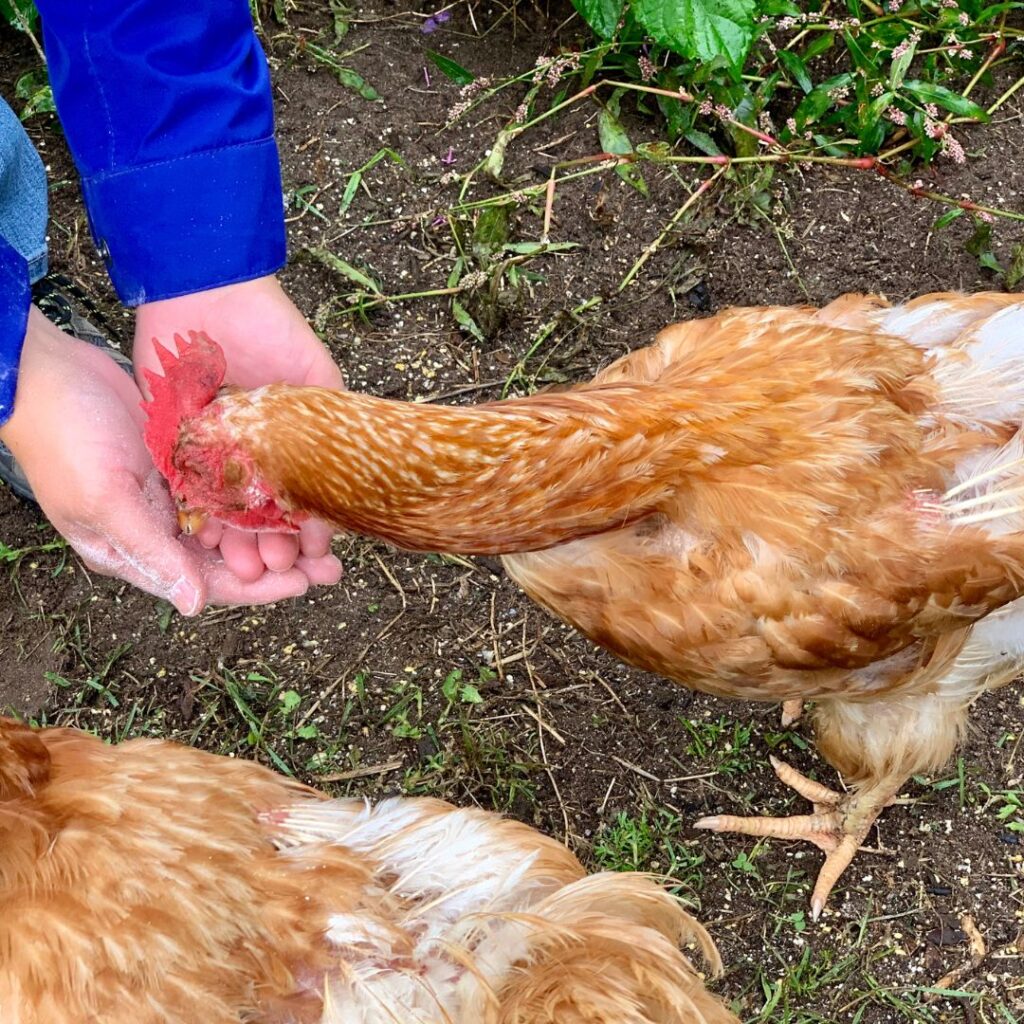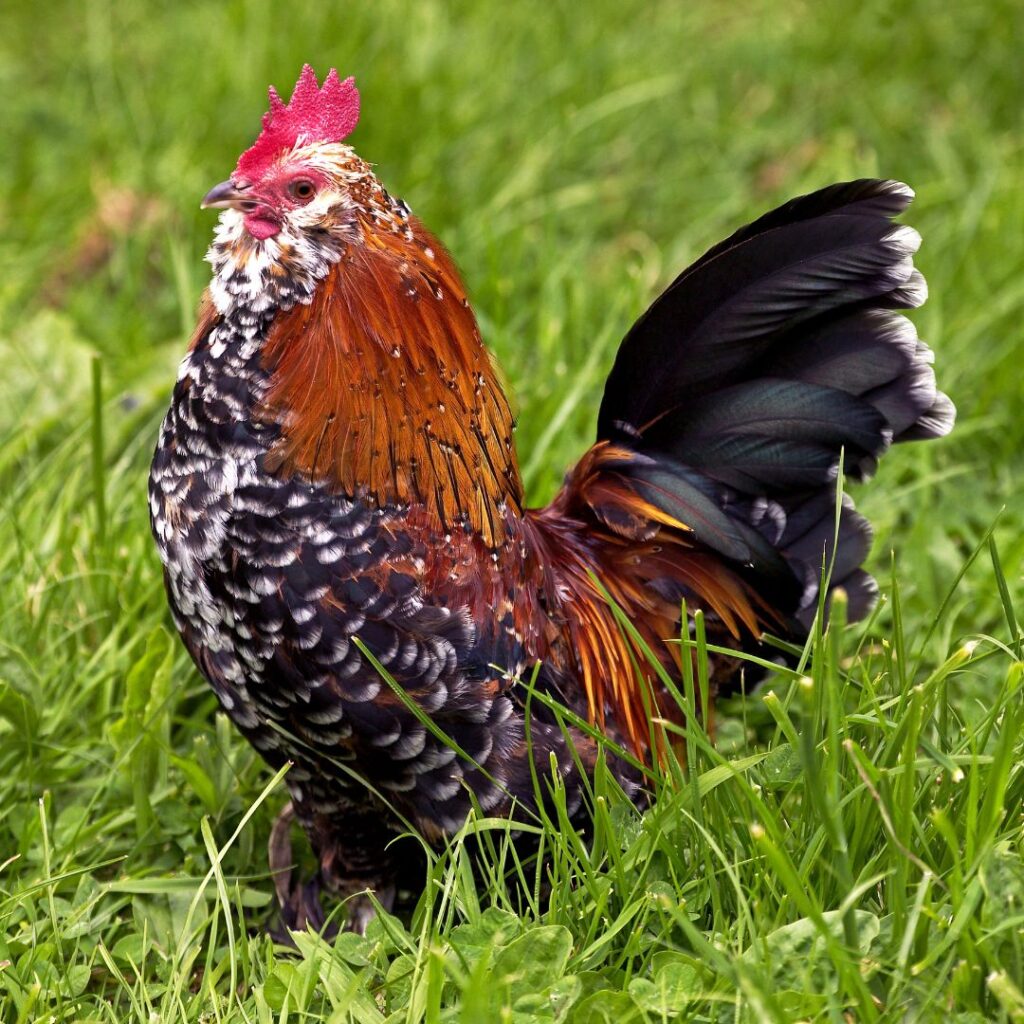Raising chicks with a broody hen is a fascinating and rewarding experience, allowing you to witness the miracle of life firsthand. With the proper knowledge and preparation, your broody hen will become a nurturing mother, successfully hatching and raising her chicks. Let’s embark on this exciting journey together and explore the secrets of broody hens and their chicks!
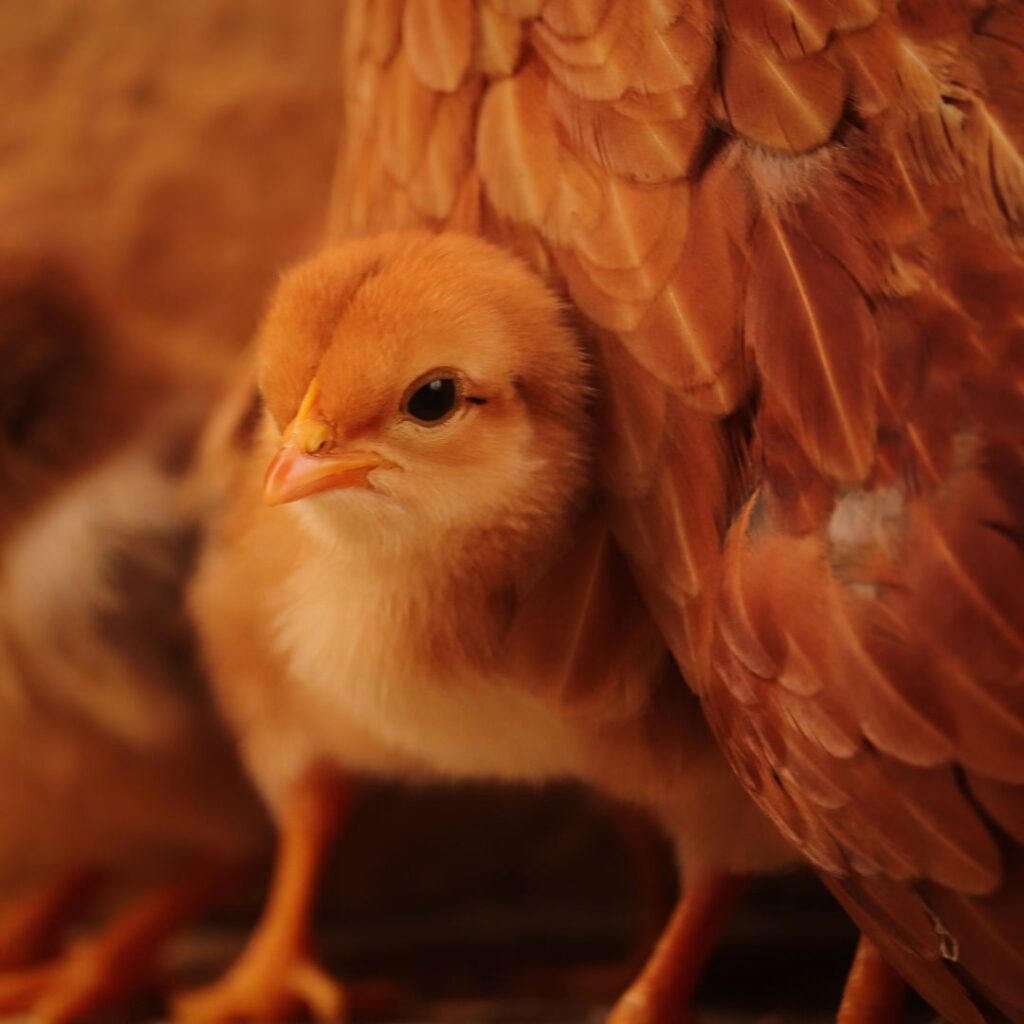
Short Summary
- Understand and utilize the maternal instincts of a broody hen to raise chickens naturally.
- Identify a broody hen through her behaviors, then prepare for chicks with appropriate resources.
- Monitor closely during the hatching process and address any health concerns promptly for the successful raising of chicks.
Understanding Broody Hens’

A broody hen is a natural wonder, driven by instinct to hatch and raise her own chicks and care for other hens in the flock. Her dedication and maternal instincts make her an invaluable asset in your flock, especially if you’re interested in raising chickens naturally and sustainably, including laying hens.
But what exactly triggers this motherly behavior, and how can you identify a broody hen among your flock?
Identifying a Broody Hen
Recognizing a broody hen is crucial for a successful hatching experience. When the days grow longer, and the temperatures rise, a hen’s instinct to brood kicks in. A broody hen will:
- Remain on the nest for extended periods, taking brief breaks to eat, drink, and defecate.
- Have broody poop that is noticeably larger than usual.
- Pluck feathers from her breast and belly, creating a bare patch for improved egg warming.
A broody hen’s behavior can be quite protective and aggressive when guarding her precious eggs. If you attempt to collect eggs or disturb her nest, she might puff up and emit warning clucks or even peck at you in defense of her eggs. To confirm her dedication to incubating and nurturing chicks, you can perform the “butt test” and the “cluck test” to ensure she is truly committed to her role as a mama hen.
Broody Hen Breeds
Certain chicken breeds that are more inclined to broodiness include:
- Silkies
- Cochins
- Orpingtons
- Brahmas
- more broody chickens and some that are hardly ever broody
These breeds retain the full instinct necessary for the species’ survival, including incubating chicken eggs and raising chicks.
On the other hand, light breeds, like:
- Minorcas
- Sicilian Buttercups
- Hamburgs
- Lakenvelders
They are less likely to brood chicks due to their flighty and energetic nature. It’s important to consider your flock’s composition and choose breeds with a stronger inclination towards broodiness if you’re planning to raise chicks with a broody hen.
A broody hen can even raise chicks of varying breeds or poultry species, showcasing her remarkable adaptability and commitment to her maternal role. Remember that not all hens will go broody, so monitoring your flock and identifying broody tendencies early on is essential.
Preparing for Chicks with a Broody Hen
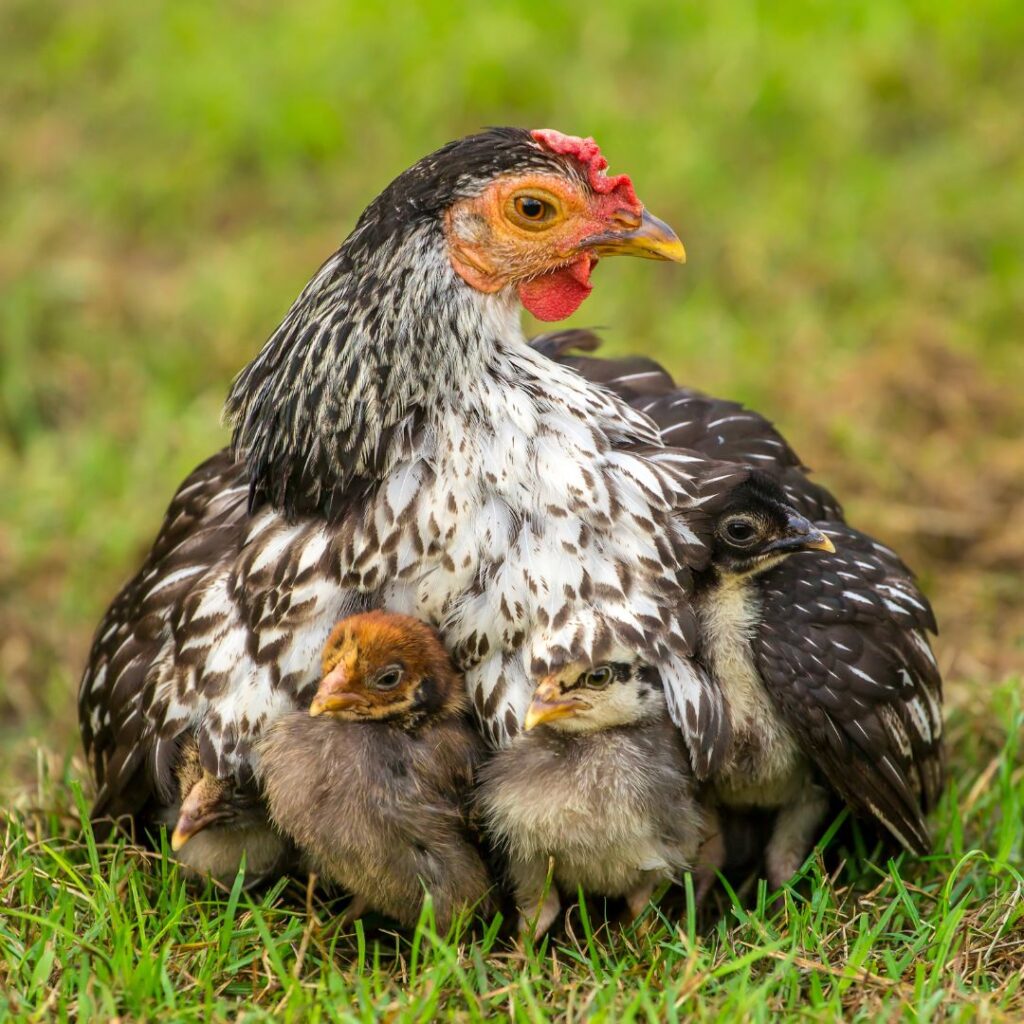
Before introducing eggs or chicks to a broody hen, ensuring the hen’s commitment to remaining broody and her ability to be an effective surrogate is essential. By selecting fertile eggs and providing a comfortable nesting space, you can set the stage for a successful hatching experience and a thriving brood of baby chicks, as the broody hen will naturally lay eggs.
It is important to ensure the hen is committed to remaining broody and can do so.
Choosing Fertile Eggs
The first step in hatching chicks with a broody hen is obtaining fertile eggs. You can collect fertilized eggs from your flock, procure them locally, or order them from breeders or hatcheries. If introducing a rooster to your flock isn’t an option, you can also purchase fertilized eggs online from reputable sources.
Before placing the eggs beneath the broody hen, it’s crucial to follow these steps:
- Let the eggs rest for 24 hours in a cool area, allowing the contents of the egg, particularly the air cell, to resettle, which is essential for the chick’s survival.
- Inspect the eggs for any cracks or damage.
- If necessary, candle them to check for viability.
Creating a Comfortable Nesting Space
A comfortable, safe, and private nesting space is crucial for a broody hen to hatch and raise her chicks successfully. Locate a dark and private location, such as a nest box inside the coop or a secluded spot. Provide food and water nearby, ensuring the hen has enough space to move and defecate.
Straw or wood shavings make excellent bedding materials for the nest. Regularly check the nesting area for cleanliness and dryness, replacing the bedding as needed. This will reduce the risk of mites and lice infestation, ensuring a healthy environment for both the broody hen and her future chicks.
The Hatching Process
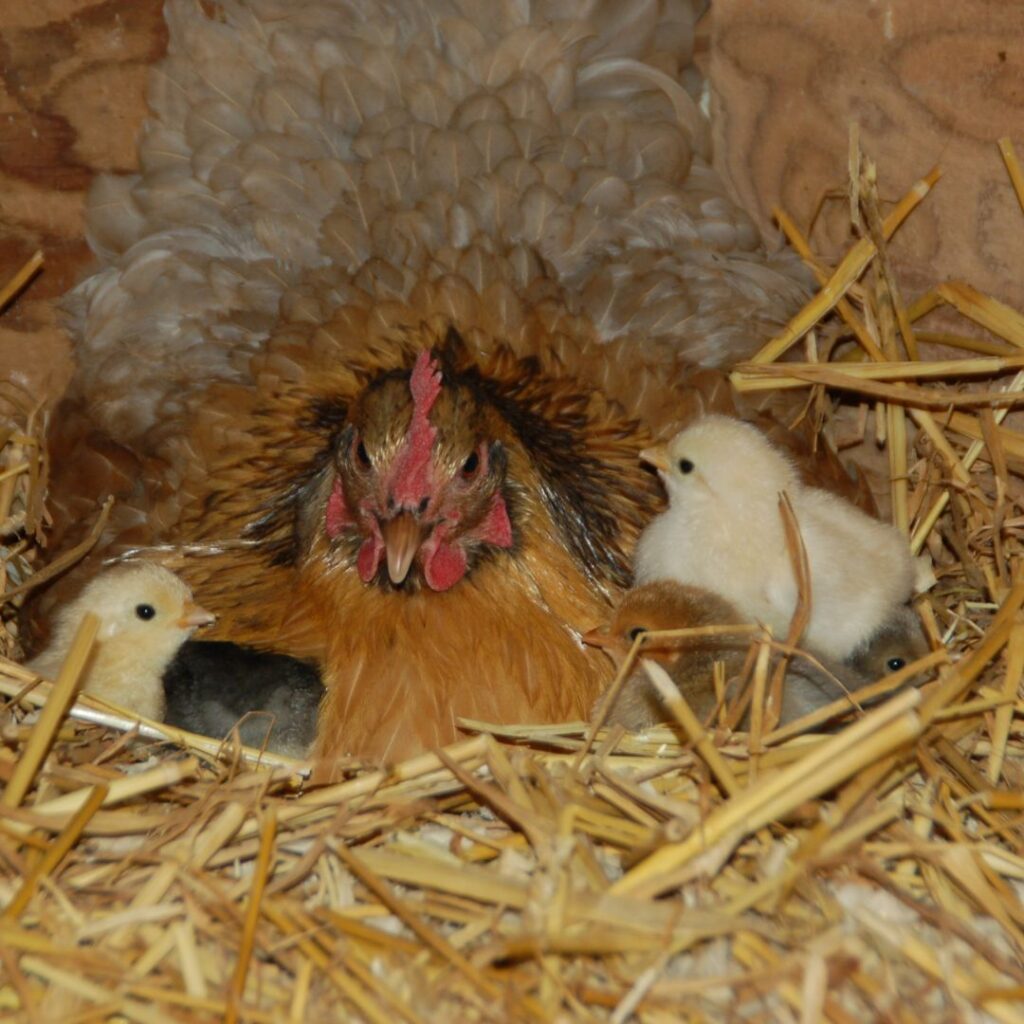
The hatching process is a critical period that requires close monitoring and care. Over the course of approximately 21 days, the broody hen will incubate her hatching eggs, providing the warmth and protection necessary for the hatch chicks to develop and, eventually, the eggs hatch.
It’s essential to watch the broody hen and her eggs, ensuring a successful outcome for both the mother and her chicks.
Monitoring the Broody Hen
During the hatching process, it’s important to monitor the broody hen’s behavior, health, and progress. Regularly check on the hen and her nest, ensuring she has access to adequate food and water. If you notice any signs of ill or distressed hens, promptly address them to maintain the hen’s well-being and the success of the hatching process.
While it’s crucial to keep an eye on the broody hen, respecting her space and privacy is equally important. Disturbing her unnecessarily can lead to stress, which may negatively impact the hatching process. Trust in the broody hen’s instincts to care for her eggs and focus on providing the necessary support and resources for her success.
Candling Eggs
Candling eggs is a valuable technique to check their viability and development during incubation. By illuminating the eggs with a light source, you can observe signs of development, such as the presence of a chick embryo, blood vessels, and a dark spot that denotes the air cell.
Handling the eggs gently and minimizing disturbances to the broody hen while candling is important. If you notice any cracks or damage to the eggs, remove them from the nest to prevent potential contamination or harm to the remaining eggs. Regular candling will help you monitor the progress of the eggs and ensure a successful hatching experience.
Caring for Newly Hatched Chicks
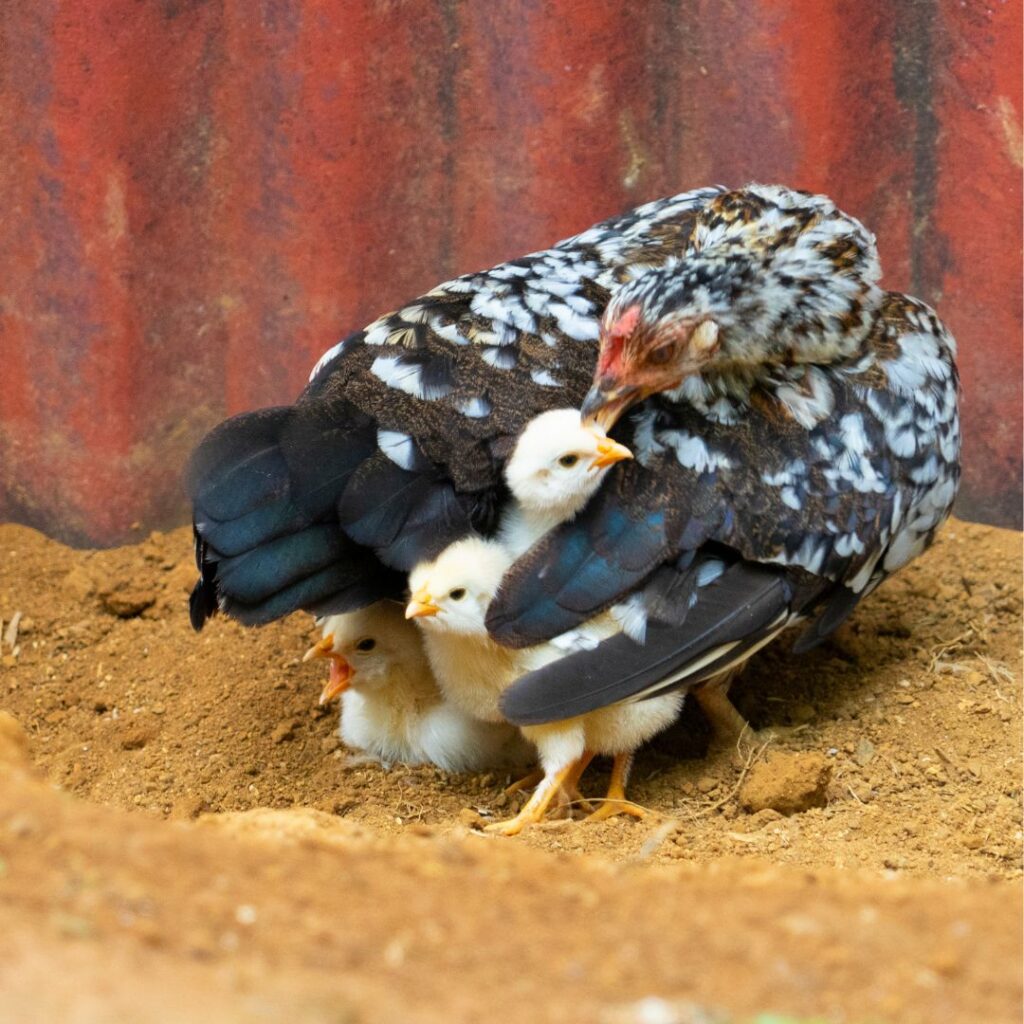
Once the chicks have hatched, it’s time to shift your focus to their care and well-being. Proper care for newly hatched chicks is crucial for their health and growth, ensuring they thrive under the watchful eye of their broody mother.
From feeding and watering to integrating the chicks into the existing flock, your care, and attention will play a vital role in the success of your new arrivals.
Feeding and Watering
Providing appropriate feed and water for both the broody hen and her chicks is essential for their health and development. Chick starter grower feed is suitable for both the mother hen and her chicks, as it meets their nutritional needs. A shallow waterer should also be provided to prevent the chicks from drowning.
Ensure that the feeder and water are raised according to the chicks’ growth while still allowing the smallest chick to access both food and water. As the chicks grow rapidly, keeping feeders filled throughout the day and monitoring their consumption is important. Providing the right nutrients and hydration will support healthy growth and development for your new chicks.
Integrating Chicks into the Flock
Gradually integrating the chicks into the existing flock is important to ensure a smooth transition for both the chicks and the adult chickens. Allow the new chicks to interact with the flock through a fence for 1 to 2 weeks to become acquainted with the older birds without physical contact.
Once the quarantine period is over, introduce the new chicks to the existing flock at a gradual pace, monitoring for any signs of aggression. In time, the chicks will become accepted members of the flock, thriving under the care of their broody mother and your attentive guidance.
Troubleshooting Common Issues
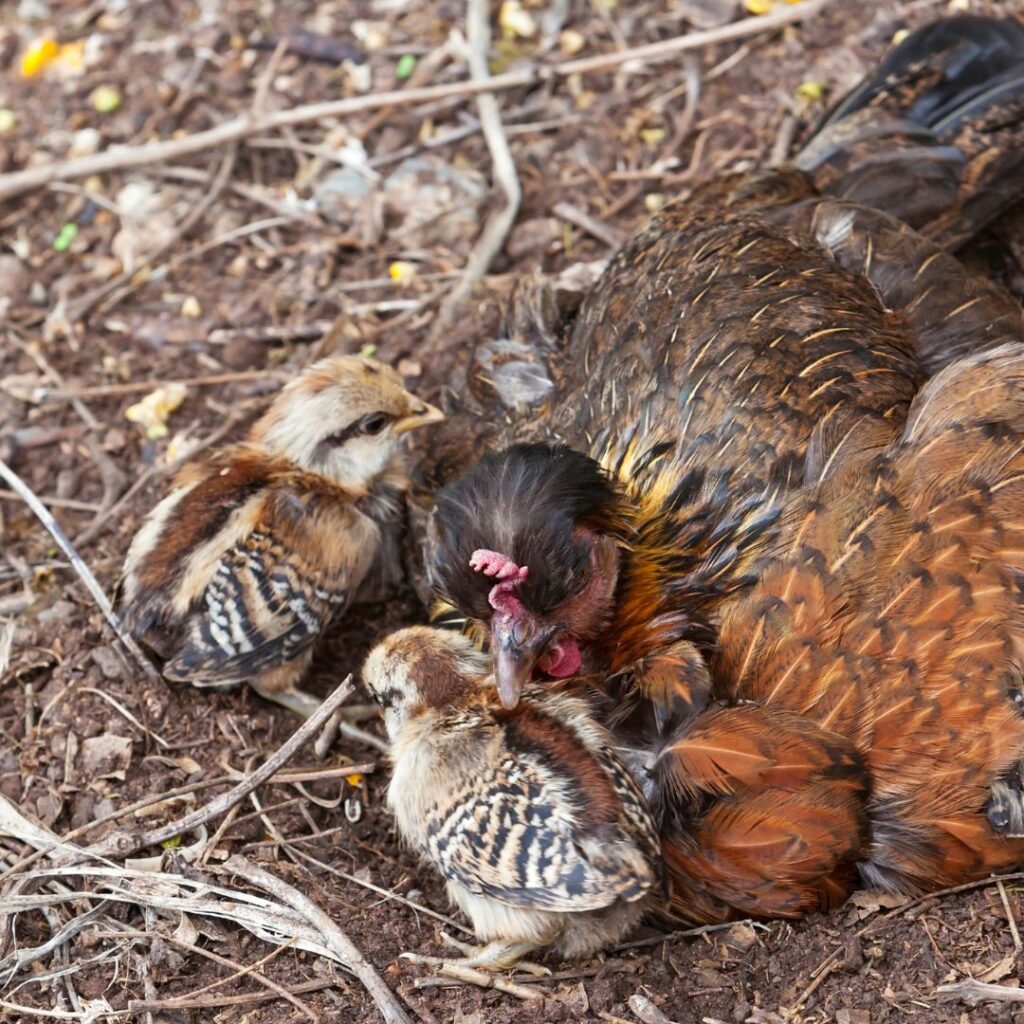
Raising chicks with a broody hen can come with its share of challenges. Common issues include:
- Mites and lice infestation
- Excessive heat and dehydration
- Reluctance to leave the nesting box
- Aggression towards humans
By promptly addressing these concerns and providing the necessary care and support, you can overcome these obstacles and ensure a successful hatching experience for your broody hen and her chicks.
Abandonment of the Nest

Sometimes, a broody hen may abandon her nest, leaving her eggs and chicks vulnerable. This can occur if the nest is moved or disrupted in some way. If your broody hen has abandoned her nest, encourage her to return by removing her food and water.
If she still refuses to return, you may need to incubate the eggs in an incubator or find a surrogate mother for the chicks.
Health Concerns
Monitoring the broody hen’s and her chicks’ health is paramount to their well-being. Look for signs of distress or illness, such as reluctance to leave the nest, pecking or biting when checking for eggs, and lack of interest in dust bathing or scratching outside the nest. Address any health concerns promptly to ensure the continued health and success of your broody hen and her chicks.
In some cases, chicks may develop issues such as splay legs. If you notice a chick with a mild case, try providing vitamins and a splint for its leg to help correct the issue. By staying vigilant and proactive, you can help ensure the health and well-being of your broody hen and her growing brood.
Tips for Success

Raising chicks with a broody hen can be a rewarding and educational experience, but it’s not without its challenges. By understanding broody hens, preparing for chicks, closely monitoring the hatching process, and caring for newly hatched chicks, you can set the stage for a successful outcome.
Remember to respect your broody hen’s space and privacy, providing her with a comfortable nesting area and the necessary resources to focus on her maternal duties. Be patient and supportive, trusting in the broody hen’s natural instincts to care for her eggs and chicks.
With dedication, patience, and a little luck, you’ll soon be enjoying the delightful sight of fluffy baby chicks thriving under the watchful eye of their loving mother, who has successfully completed laying eggs.
Summary
Raising chicks with a broody hen is an incredible journey of wonder and learning. By understanding broody hens, preparing for the arrival of chicks, monitoring the hatching process, and caring for newly hatched chicks, you can ensure a successful and rewarding experience for you and your feathered friends. Embrace the challenges and cherish the joys as you embark on this amazing adventure, witnessing the miracle of life firsthand.
Be sure to read all our beginner chicken owner tips.
Frequently Asked Questions
Can I put baby chicks under a broody hen?
Day-old chicks have the best chance of being accepted by a broody hen, but even older chicks can be adopted if the hen is desperate enough. You should monitor for signs of broodiness, such as distraction, stealing other eggs, and pulling out feathers to make a nest.
Overall, you can put baby chicks under a broody hen with some degree of success.
How do you raise chicks with a broody hen?
To raise chicks with a broody hen, let her sit on the eggs in a nest box that is at least one-foot square, then introduce chicks to her if desired. Additionally, ensure the feeder and water are low enough for the young chicks and provide a safe space for the mother to protect the chicks.
How many chicks can a broody hen take care of?
A standard hen can comfortably care for up to 12 chicks, while a banty can manage a few.
How long does it take for a broody hen to hatch eggs?
It typically takes 21 days for a broody hen to hatch eggs successfully.
How can I identify a broody hen?
Their nesting behavior can identify a broody hen, protectiveness over eggs, and reluctance to leave the nest.

